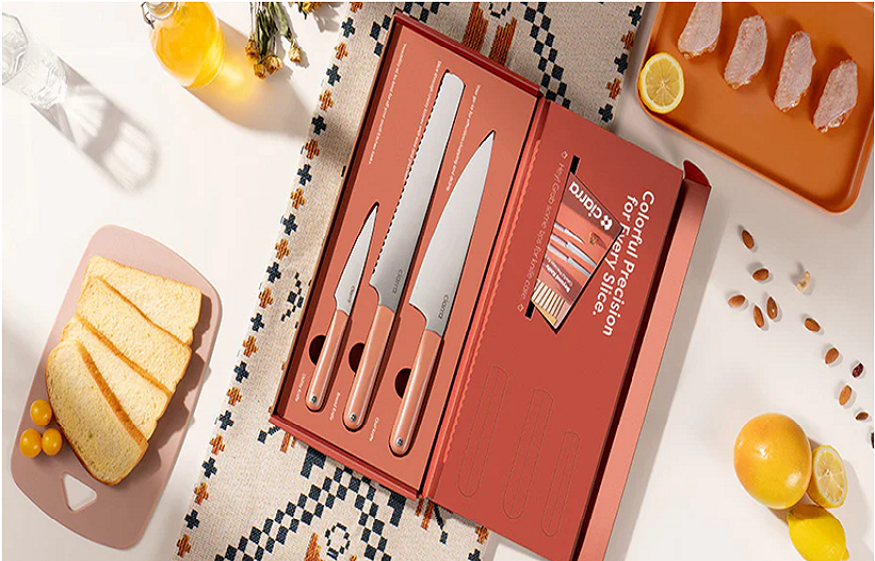Cooking is an art and a science that requires precision, skill, and the right tools. In this article, we explore the use of a paring knife alongside other essential kitchen knives, including chef’s knives and fruit knives, and how these tools work together to streamline ingredient preparation. We also dive into the role of the ductless cooker hood and its synergistic operation with other kitchen appliances like stoves and ovens, helping to create a more efficient and pleasant cooking environment.
The Role of the Paring Knife and Other Kitchen Knives
The paring knife is often regarded as the smallest and most precise tool in the kitchen. With its small blade, typically 2.5 to 4 inches in length, it is designed for intricate tasks such as peeling, coring, and trimming fruits and vegetables. While it may seem specialized, it is an indispensable knife for detailed preparation work, particularly when dealing with delicate ingredients.
Related: what is a paring knife used for
However, the paring knife is just one of many knives that every kitchen should have. To complete a full range of culinary tasks efficiently, it’s essential to use different knives for specific jobs:
Chef’s Knife: The chef’s knife is a versatile all-purpose tool with a broad, curved blade, generally 8 to 10 inches long. It’s designed for chopping, dicing, mincing, and slicing larger quantities of ingredients. The broad blade allows for a rocking motion, making it ideal for chopping herbs, onions, or meat.
Santoku Knife: A Japanese counterpart to the chef’s knife, the Santoku is shorter, typically around 5 to 7 inches. It is known for its flat edge and slightly rounded tip, making it perfect for slicing, dicing, and mincing vegetables, fish, and meat. Its compact size allows for more control, particularly when working with smaller ingredients.
Fruit Knife: Similar to the paring knife, the fruit knife is typically 3 to 4 inches long with a thin, sharp blade ideal for cutting fruits into smaller, uniform pieces. Its design allows it to work well with softer, more delicate produce like berries or citrus, as well as with precision tasks like removing seeds or segments from fruit.
Serrated Knife: While not mentioned as often, a serrated knife is invaluable for cutting through foods with tough exteriors and soft interiors, such as bread, tomatoes, and cakes. Its saw-like teeth make slicing through these foods cleanly much easier without crushing them.
Efficient Use of Kitchen Knives in Ingredient Preparation
For efficient preparation, the key is to pair the right knife with the right task. A well-organized cutting strategy involves using the paring knife for delicate trimming or peeling, the chef’s knife for heavy-duty chopping and slicing, and the fruit knife for specific tasks like removing cores or segments from fruits. Working in tandem, these knives allow for a smooth flow in the kitchen and reduce the risk of accidents caused by using the wrong knife for the job.
A well-maintained set of knives can also improve efficiency, as the right blade will glide through ingredients with minimal resistance. A dull knife, on the other hand, can slow down preparation time and even lead to injury due to increased force and unpredictable movements. It’s essential to regularly sharpen and care for your knives to ensure they remain sharp and effective.
The Synergistic Strategy of the Ductless Cooker Hood with Kitchen Appliances
While knives are integral to the preparation of ingredients, the environment in which you cook is equally important. One of the most effective ways to ensure a comfortable and clean cooking environment is by using a ductless cooker hood. This type of range hood operates by filtering air through activated charcoal or carbon filters, removing grease, smoke, and odors without the need for external ducting to vent the air outside. This is particularly useful in kitchens where venting through an exterior wall is not an option.
The ductless cooker hood works in synergy with other kitchen appliances, such as stoves and ovens, to improve both air quality and cooking performance:
Stoves: Whether you are using a gas, electric, or induction stove, a ductless cooker hood can effectively capture the steam, smoke, and odors produced during cooking. This is especially crucial when frying, grilling, or sautéing, which tends to produce strong smells and excess moisture. The hood helps keep the kitchen air fresh and breathable, allowing you to focus on your cooking without the distraction of lingering smells.
Ovens: Ovens, especially those used for baking or roasting, can release moisture and smells that can overwhelm a kitchen. A ductless cooker hood is effective at extracting these odors and moisture, maintaining a dry and pleasant atmosphere in the kitchen. This ensures that the air remains clear, which is particularly beneficial if you are preparing multiple dishes simultaneously or cooking in a small space.
Dishwashers: While not traditionally thought of in conjunction with cooker hoods, dishwashers contribute to kitchen humidity. The ductless hood’s air filtration system helps control this moisture, making the kitchen more comfortable, especially in smaller kitchens.
How the Synergy Works
The synergistic strategy of the ductless cooker hood is to create a balanced kitchen environment that complements the operation of your other appliances. For example:
Air Filtration and Moisture Control: As the stove and oven heat up and release steam and smoke, the ductless cooker hood absorbs these byproducts, ensuring that your kitchen remains dry and fresh.
Odor Neutralization: The activated carbon filters in the cooker hood trap odors from cooking, such as the smell of fried food or roasted meats, and neutralize them. This prevents the smells from lingering, making the kitchen more comfortable and reducing the need for constant ventilation.
Energy Efficiency: Modern ductless hoods are designed to work quietly and efficiently, operating without the need for extensive ducting systems. By integrating with other appliances, such as induction stoves, which are energy-efficient, the cooker hood adds to the overall energy-efficient operation of the kitchen.
Aesthetic and Functional Integration: The sleek design of ductless cooker hoods ensures that they blend seamlessly with modern kitchen aesthetics while serving a functional purpose. A properly designed kitchen integrates all appliances in a way that maximizes both space and utility.
Conclusion
A well-equipped kitchen, with the right set of knives and a synergistic combination of appliances, can greatly enhance the efficiency and enjoyment of cooking. The paring knife, chef’s knife, fruit knife, and other specialized blades each serve a distinct purpose, helping to streamline ingredient preparation. Meanwhile, the ductless cooker hood works in harmony with stoves, ovens, and other kitchen gadgets to ensure that the air remains clean and the cooking environment comfortable. Together, these tools and appliances contribute to an effective, efficient, and enjoyable cooking experience.

